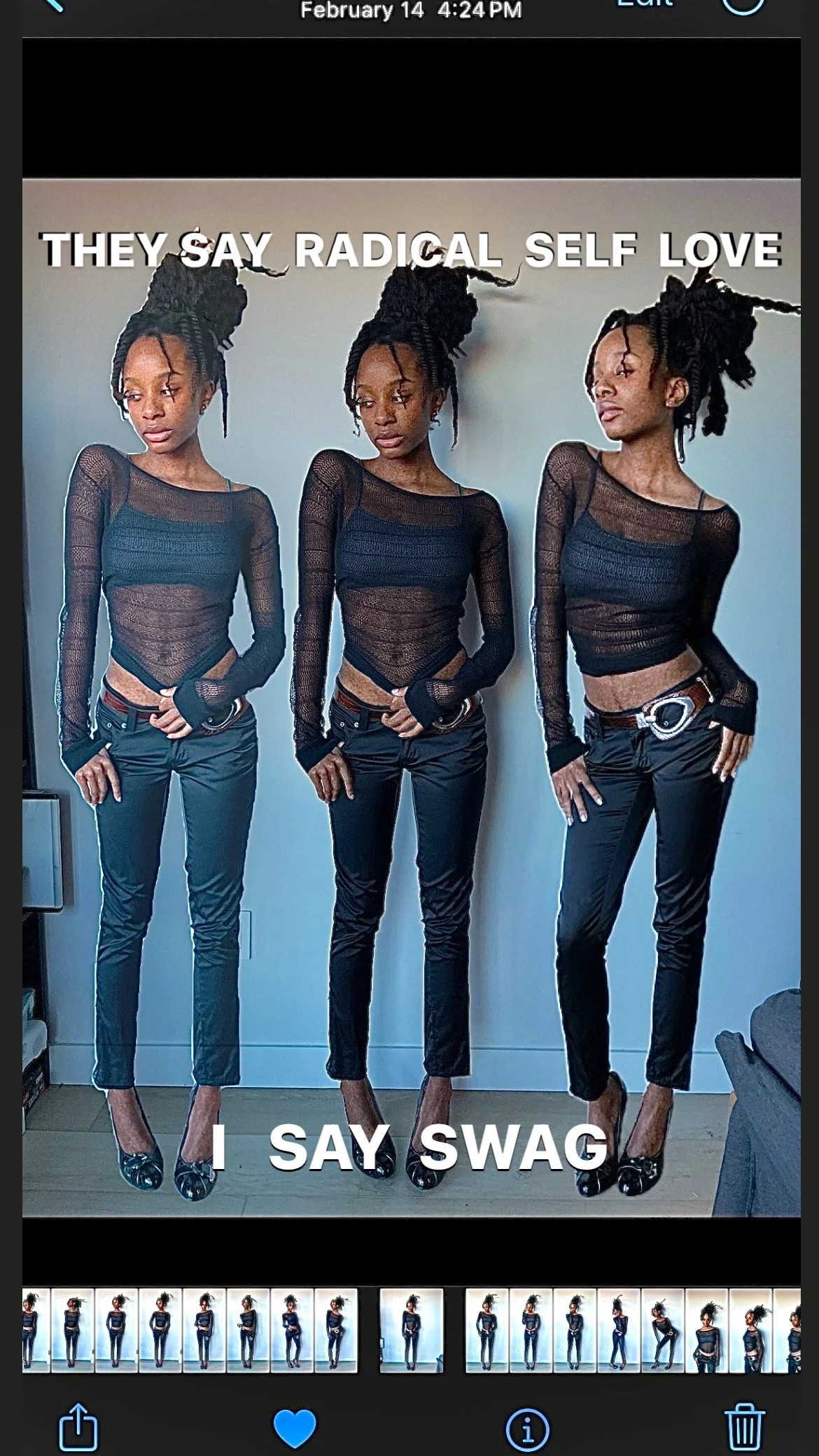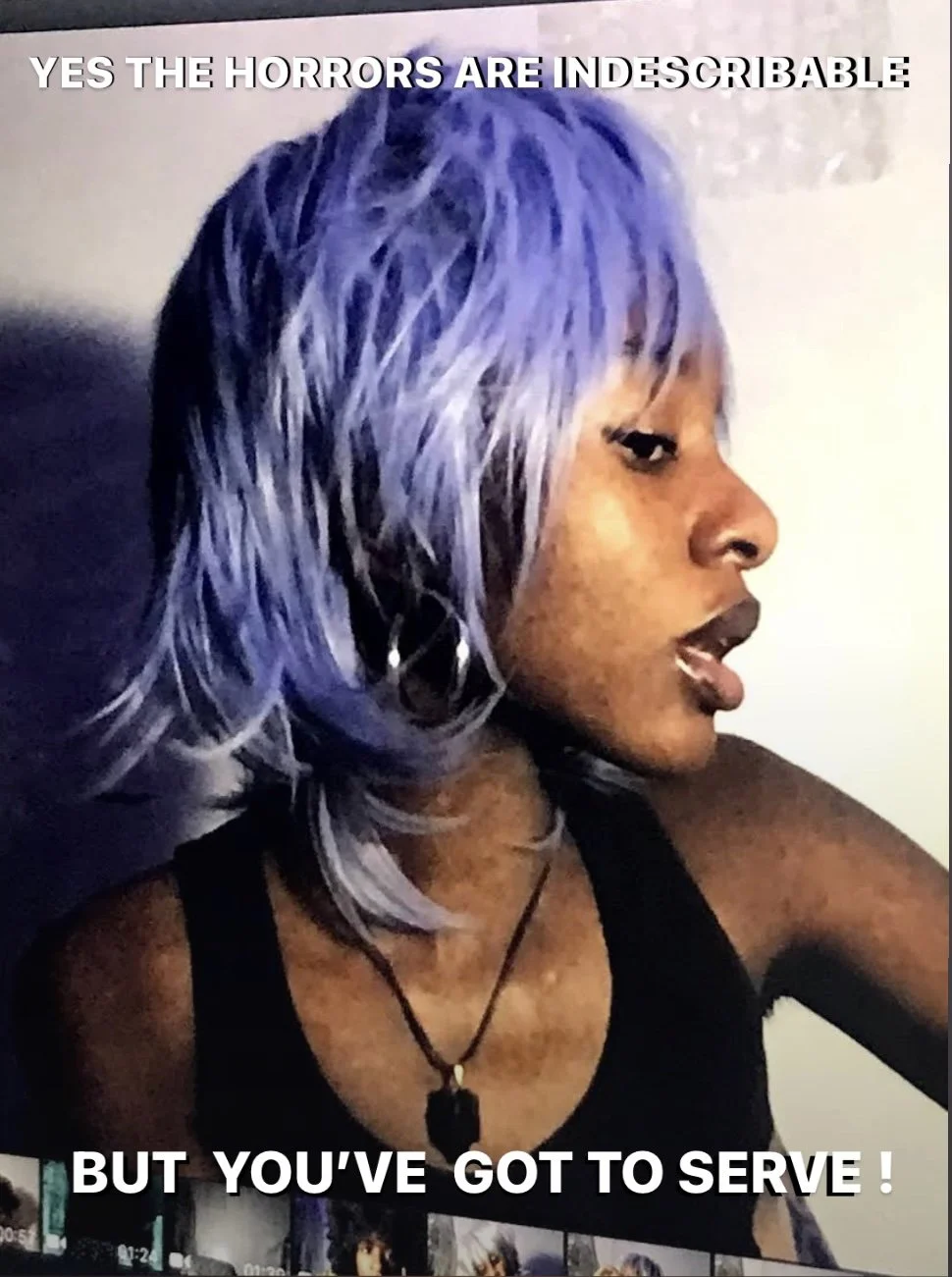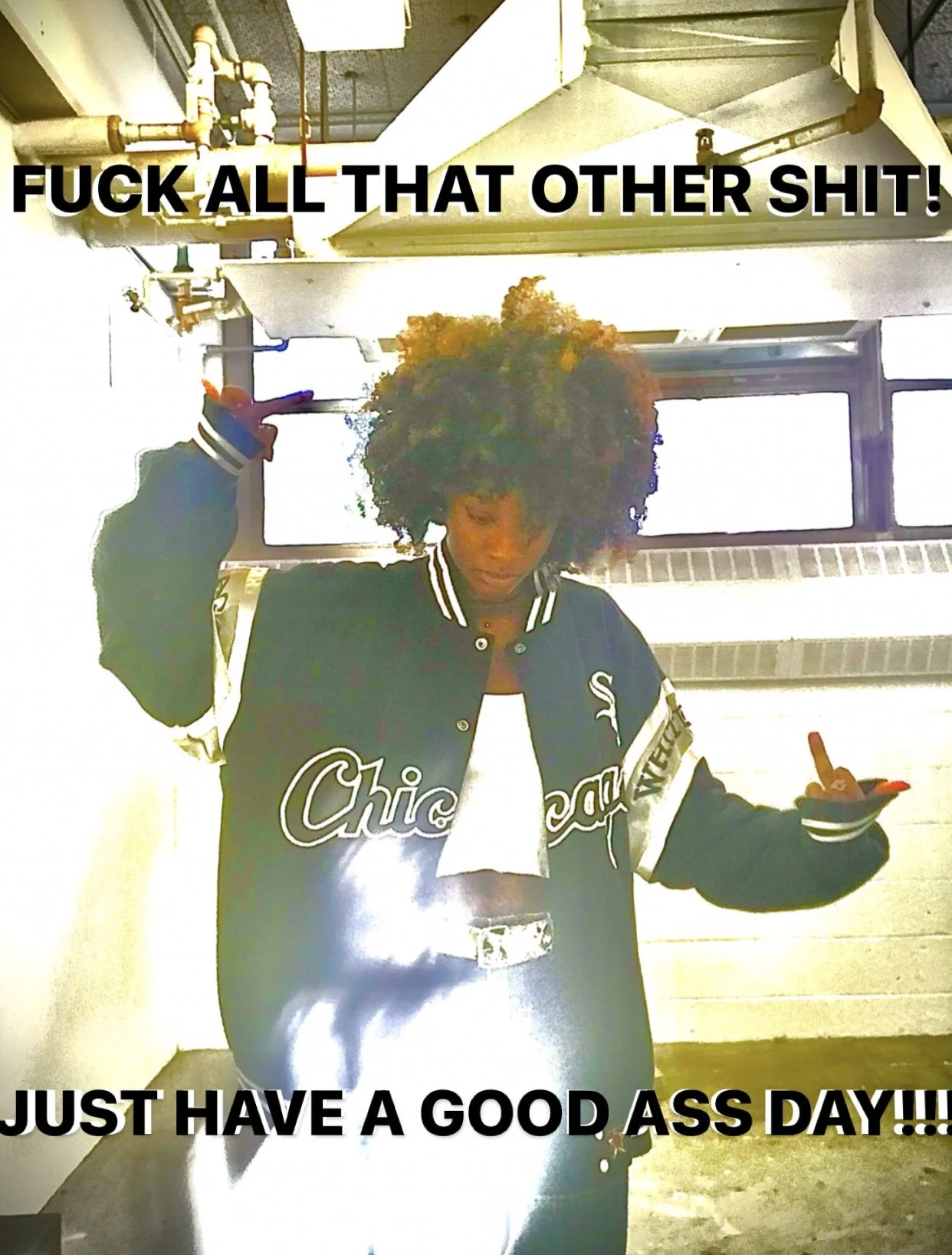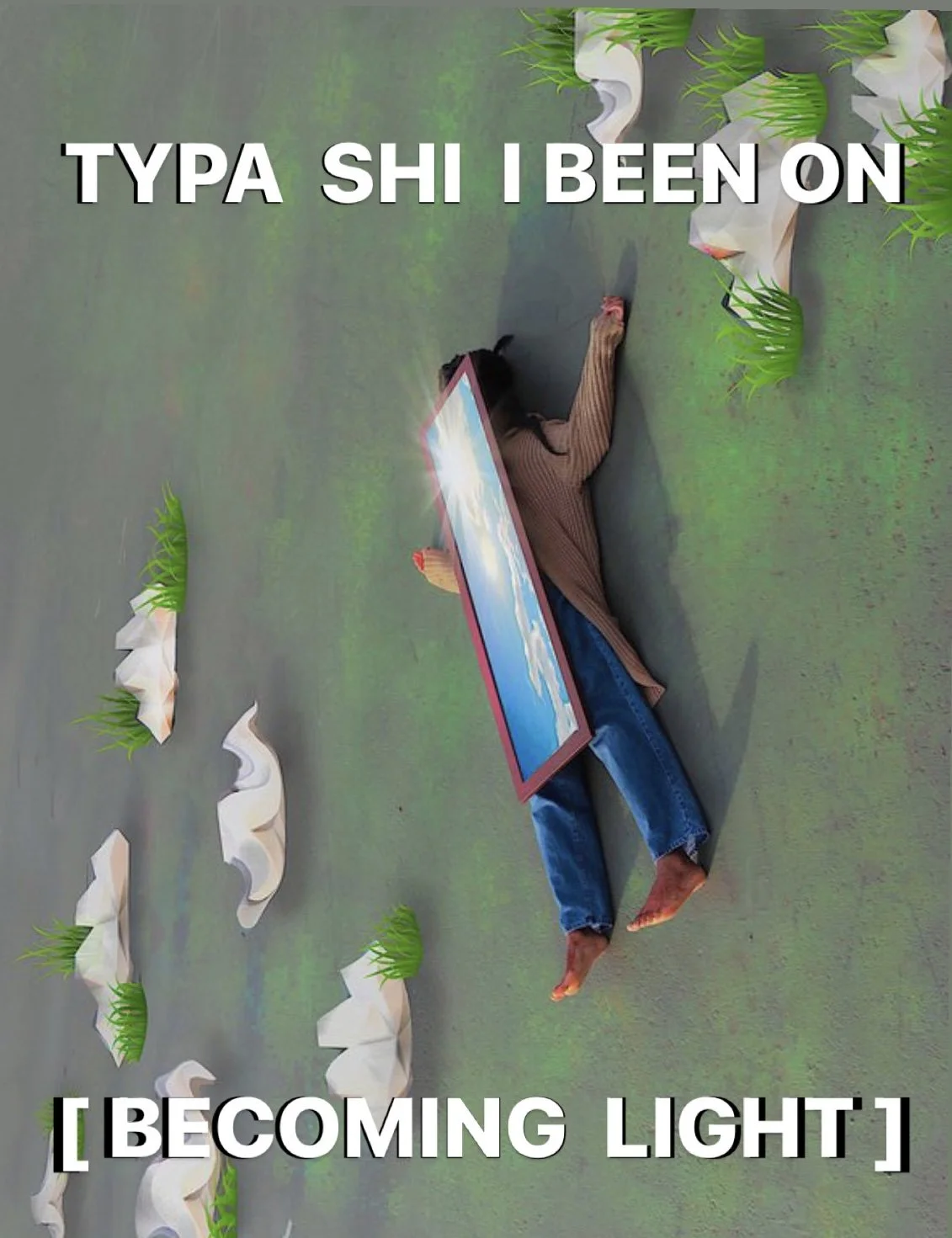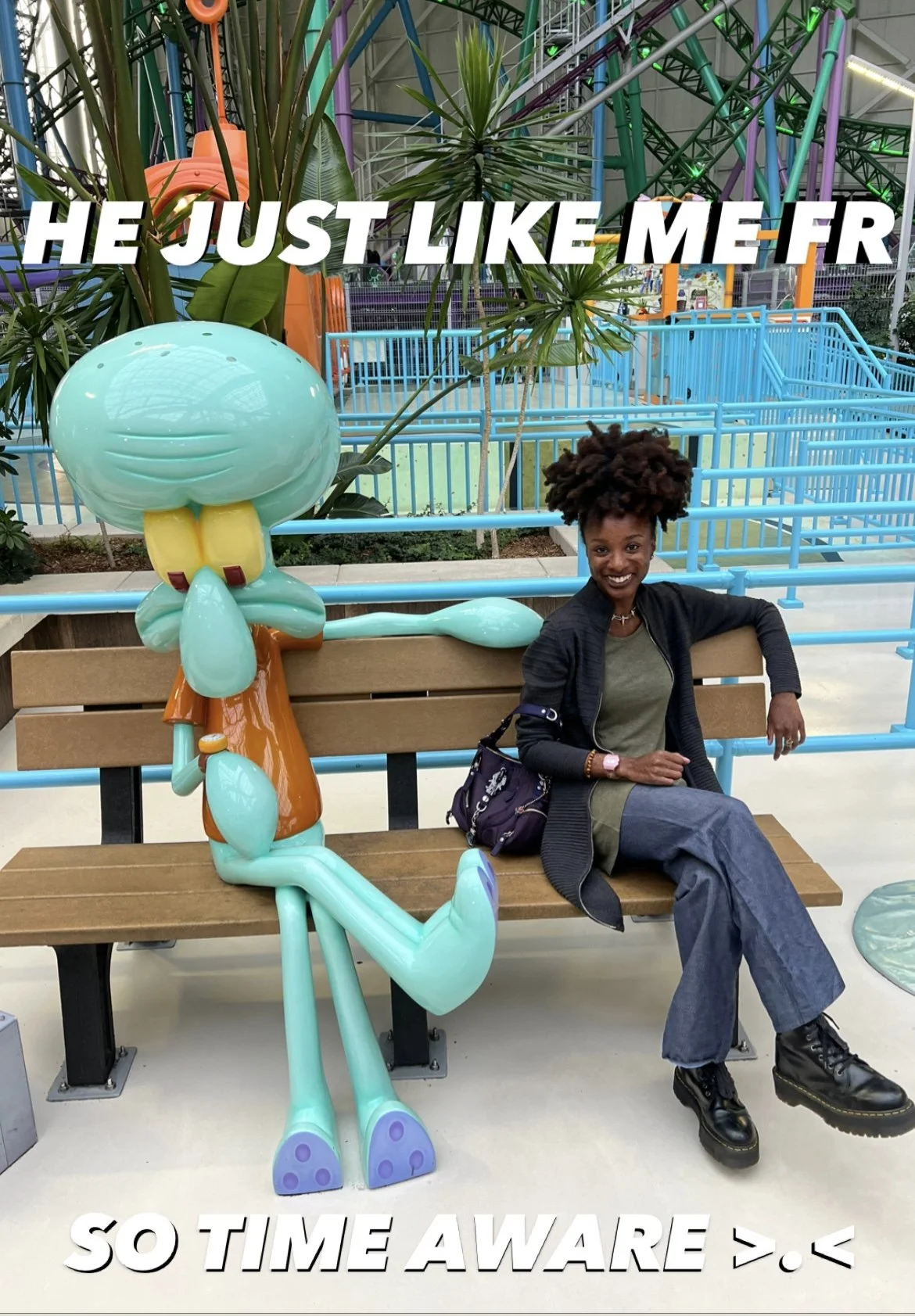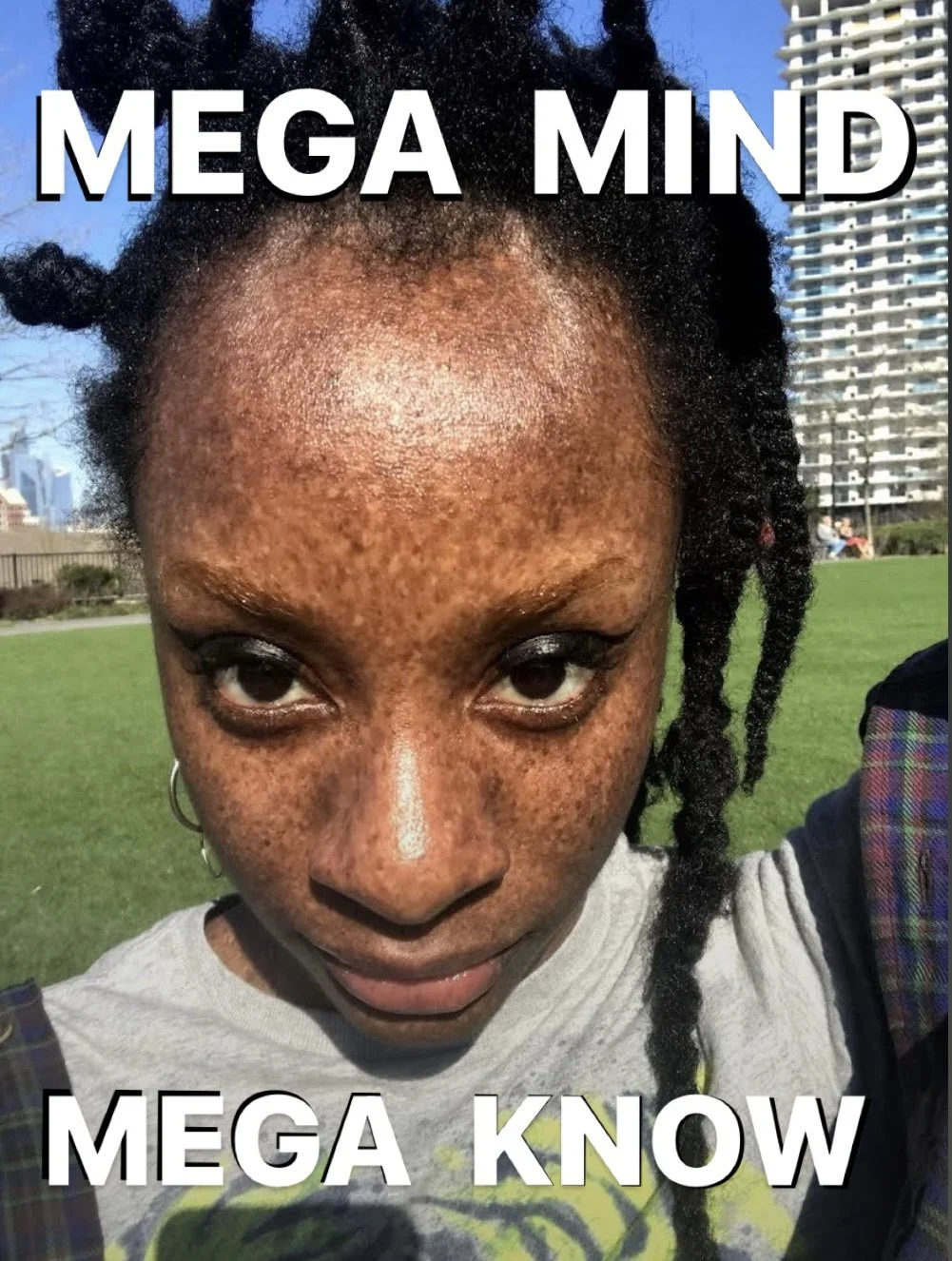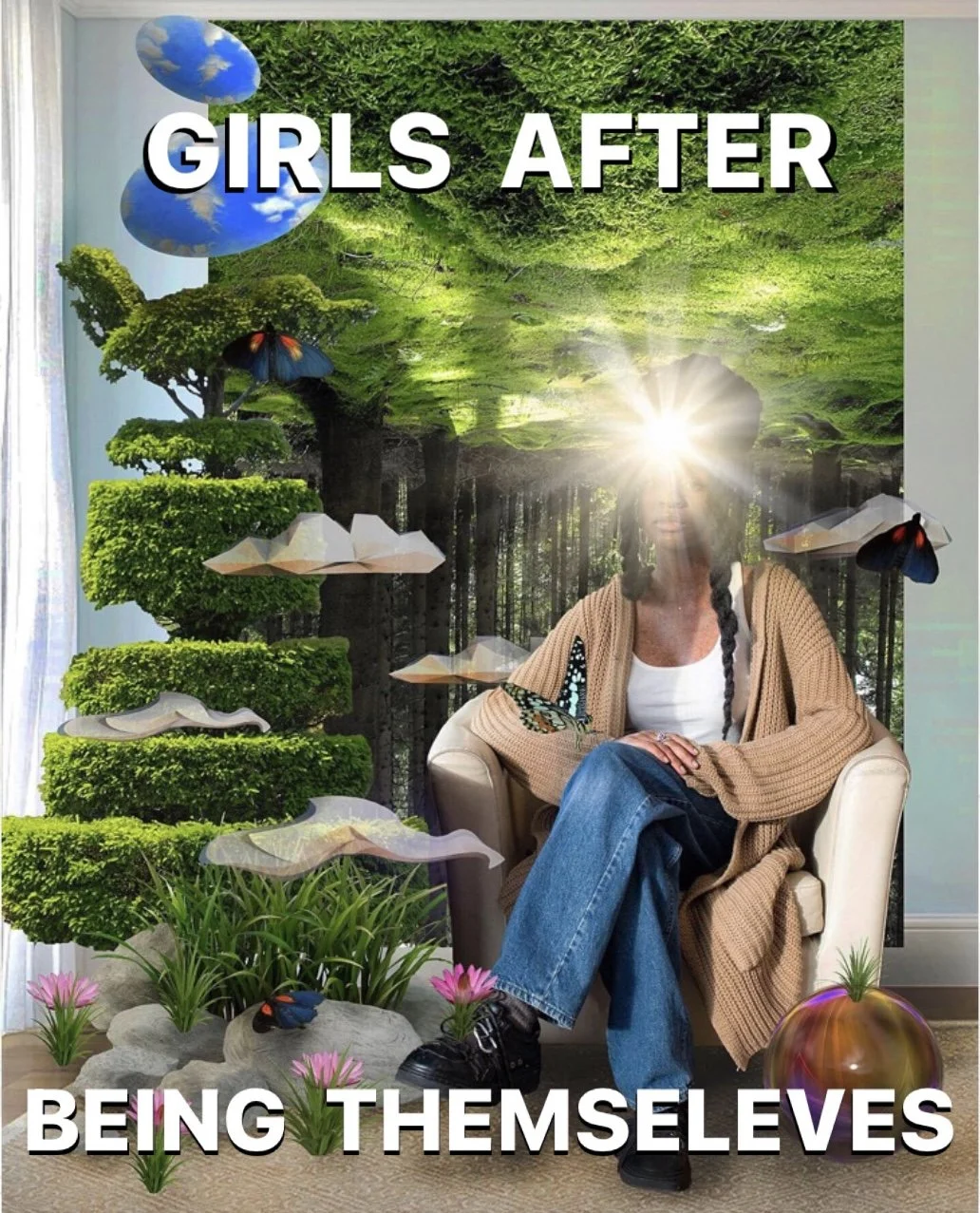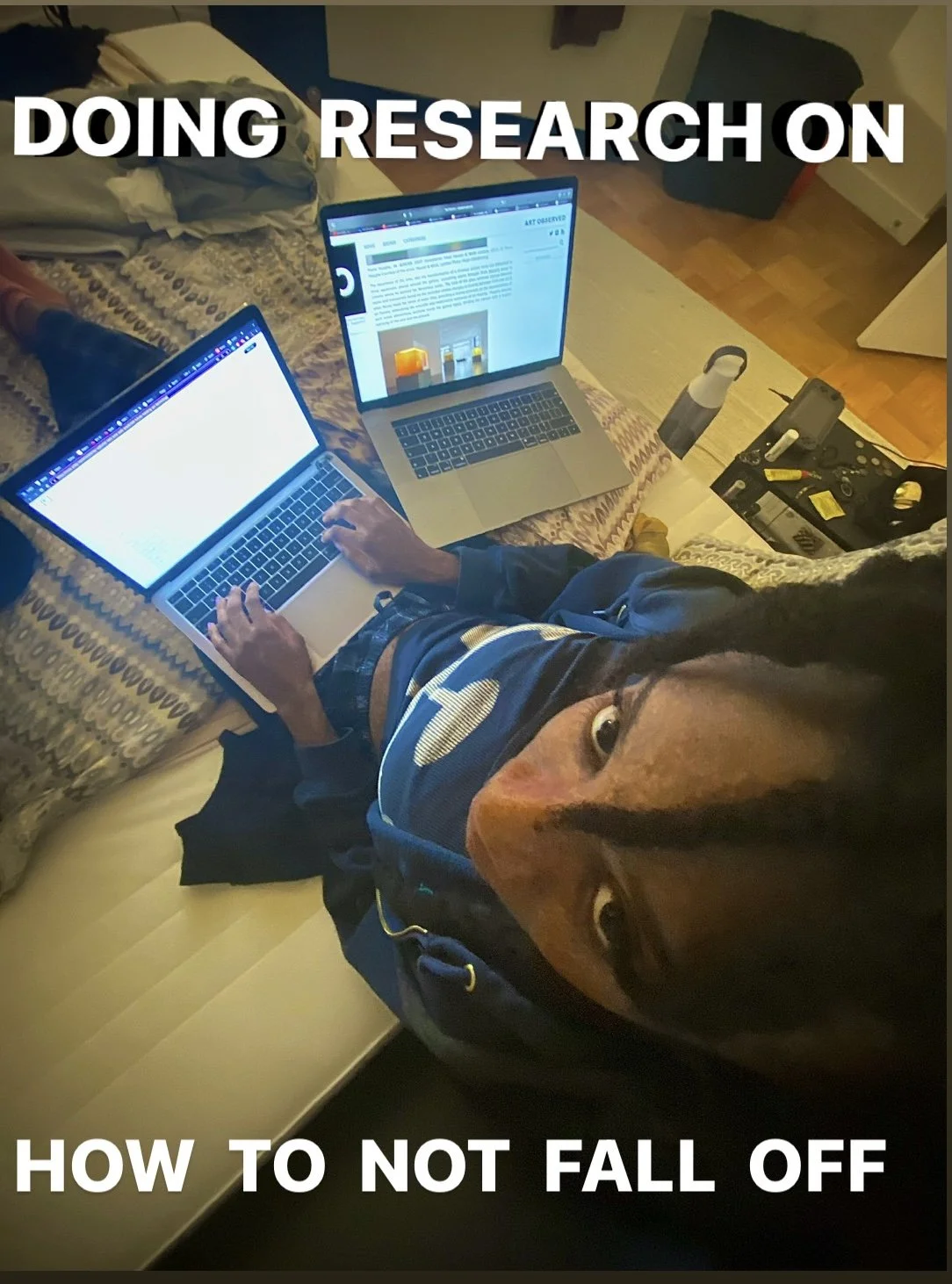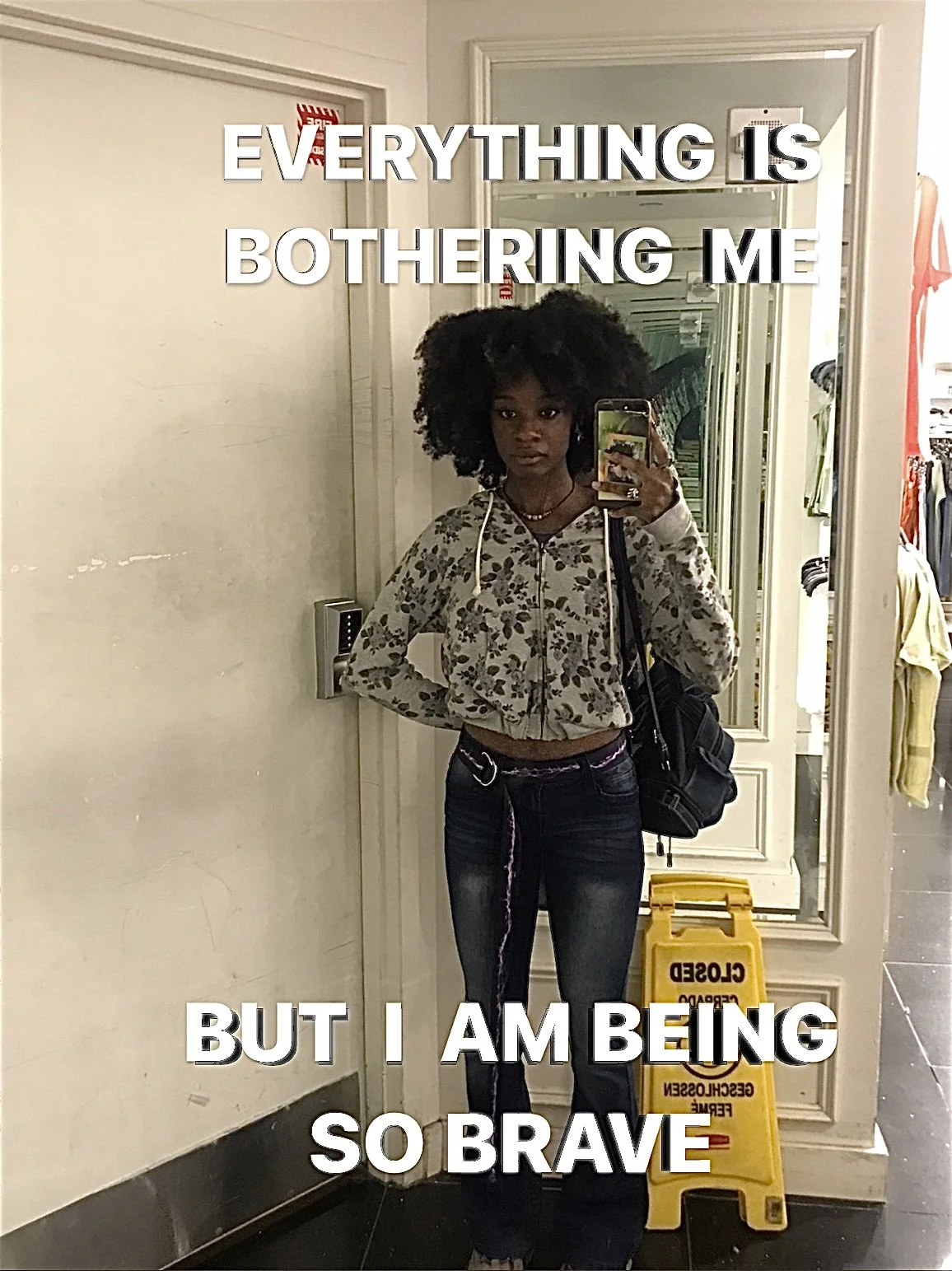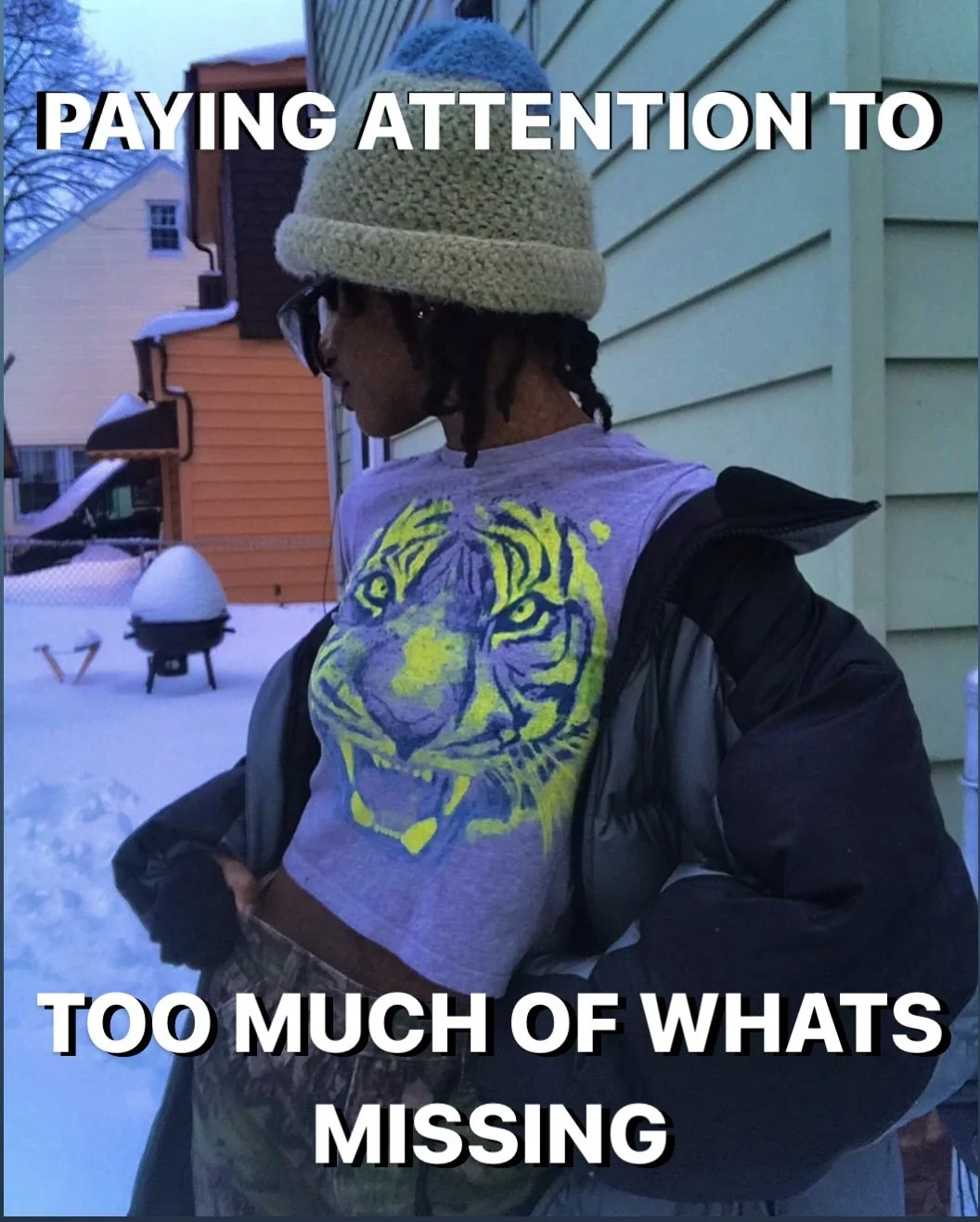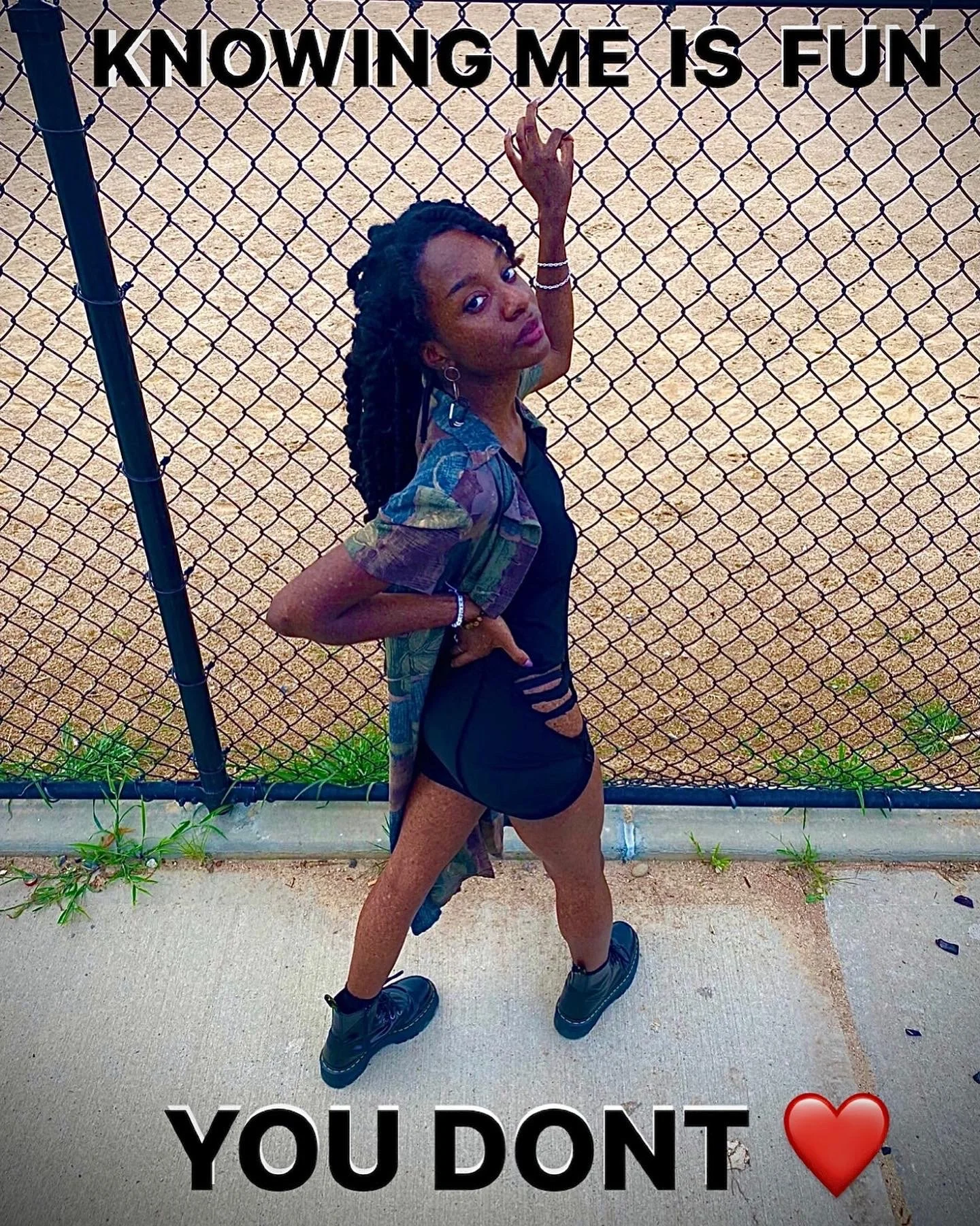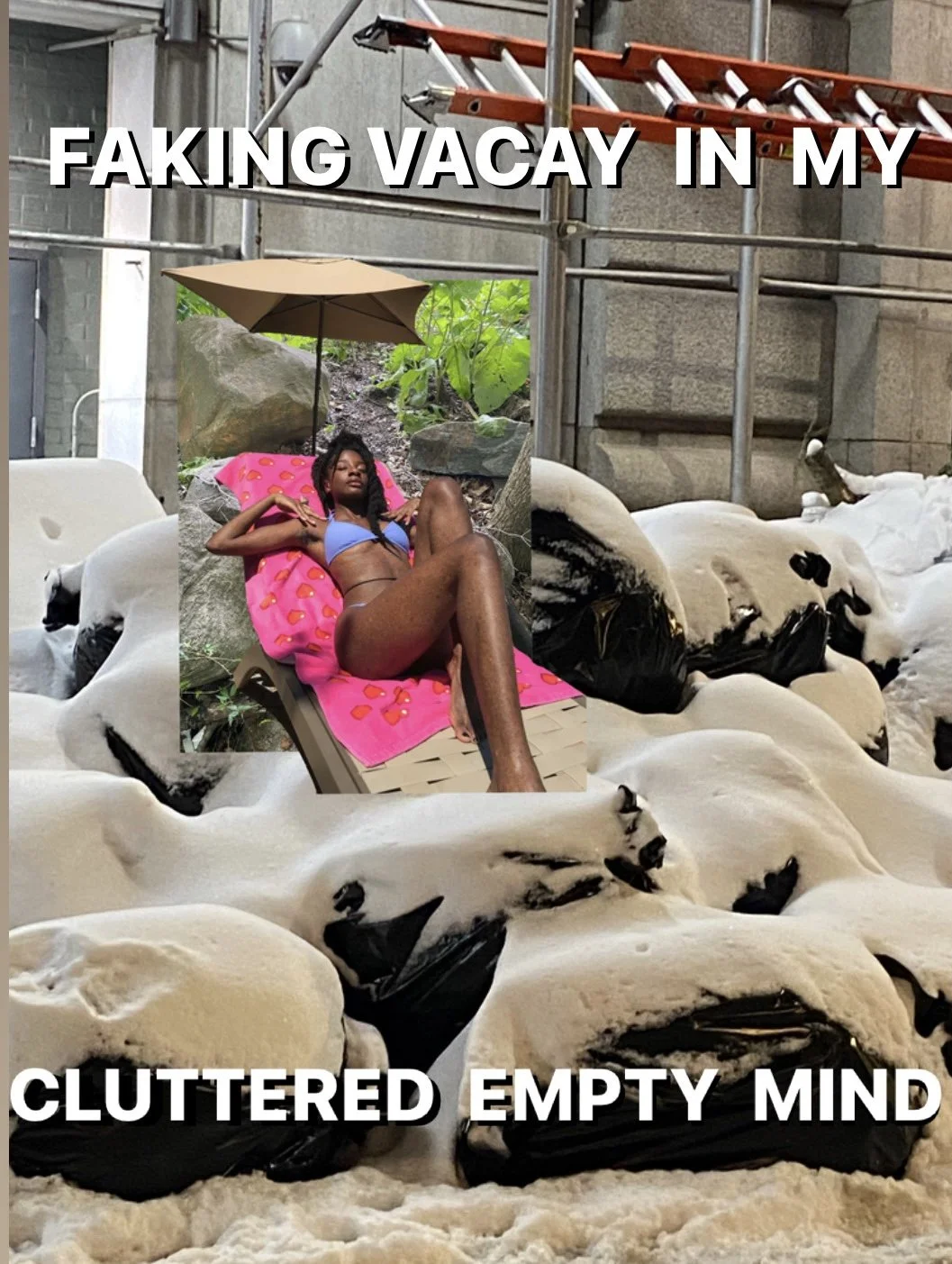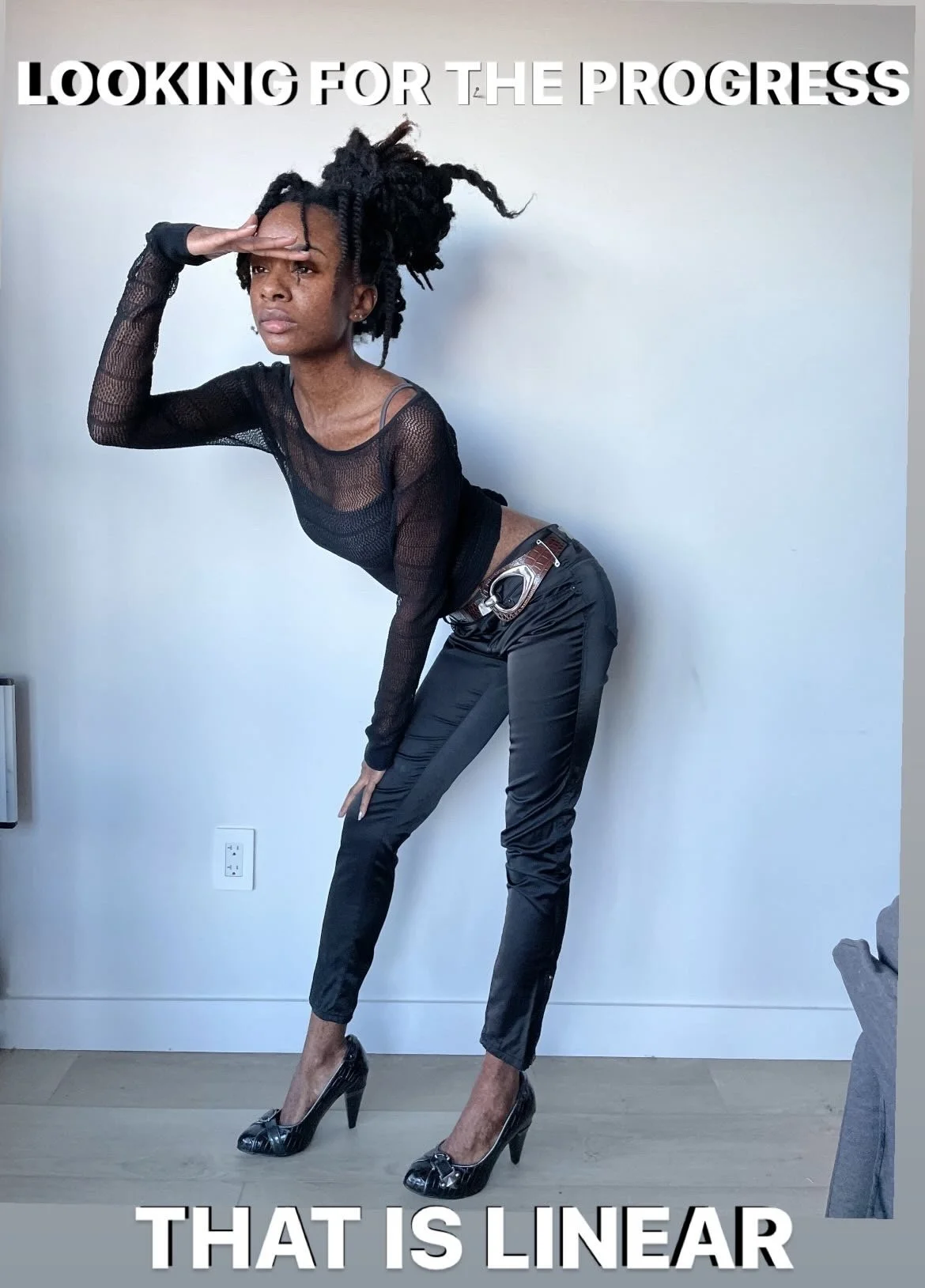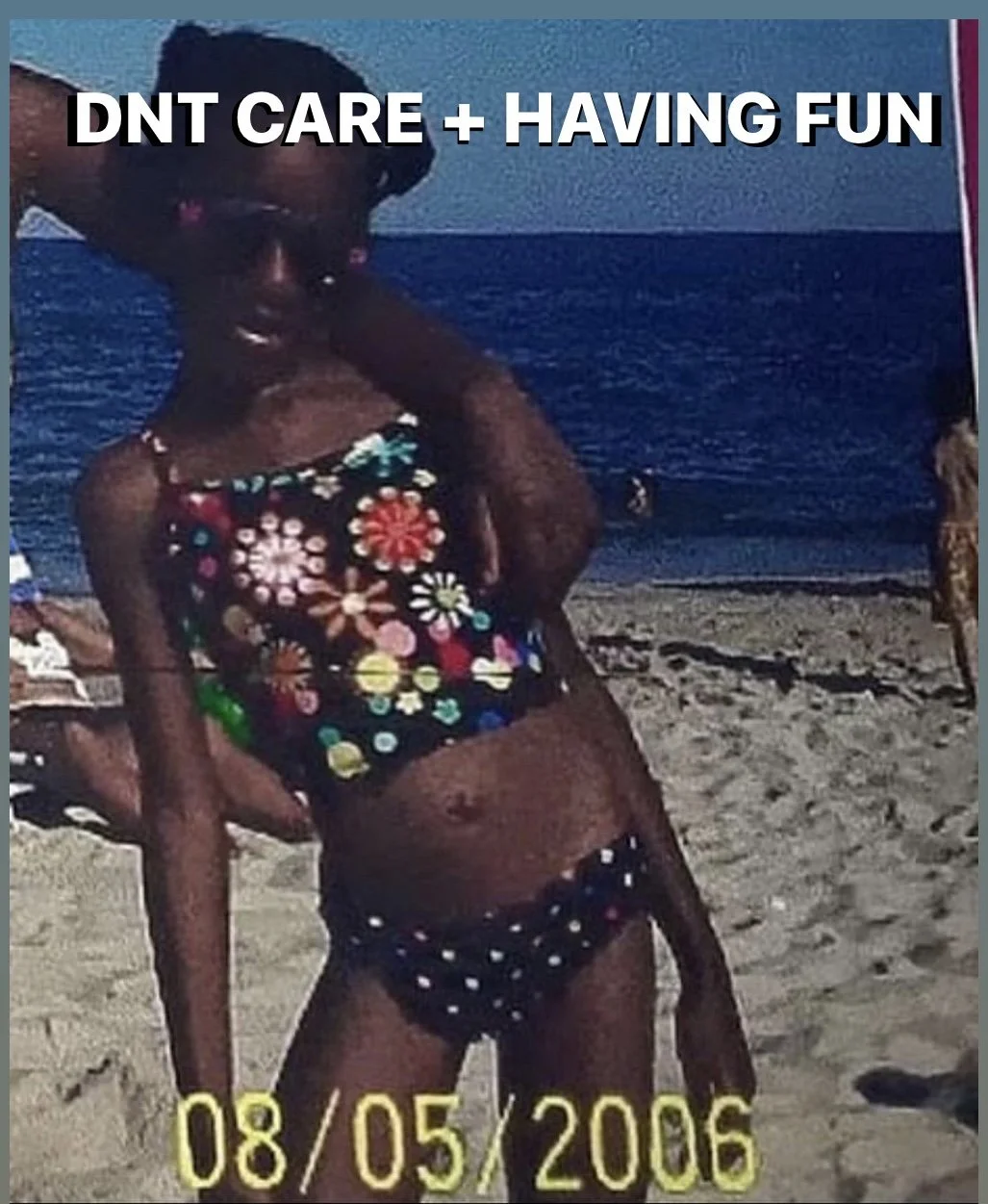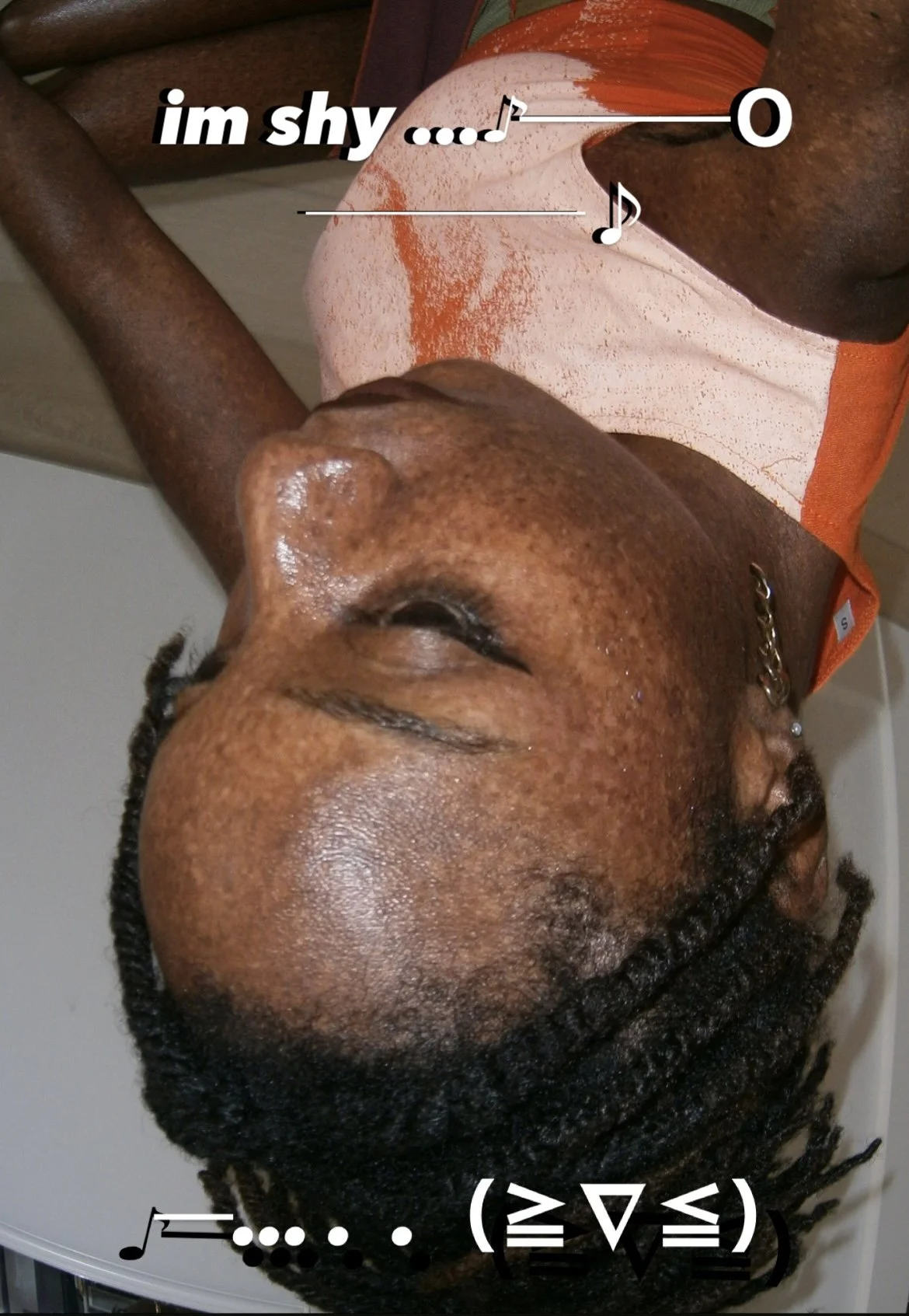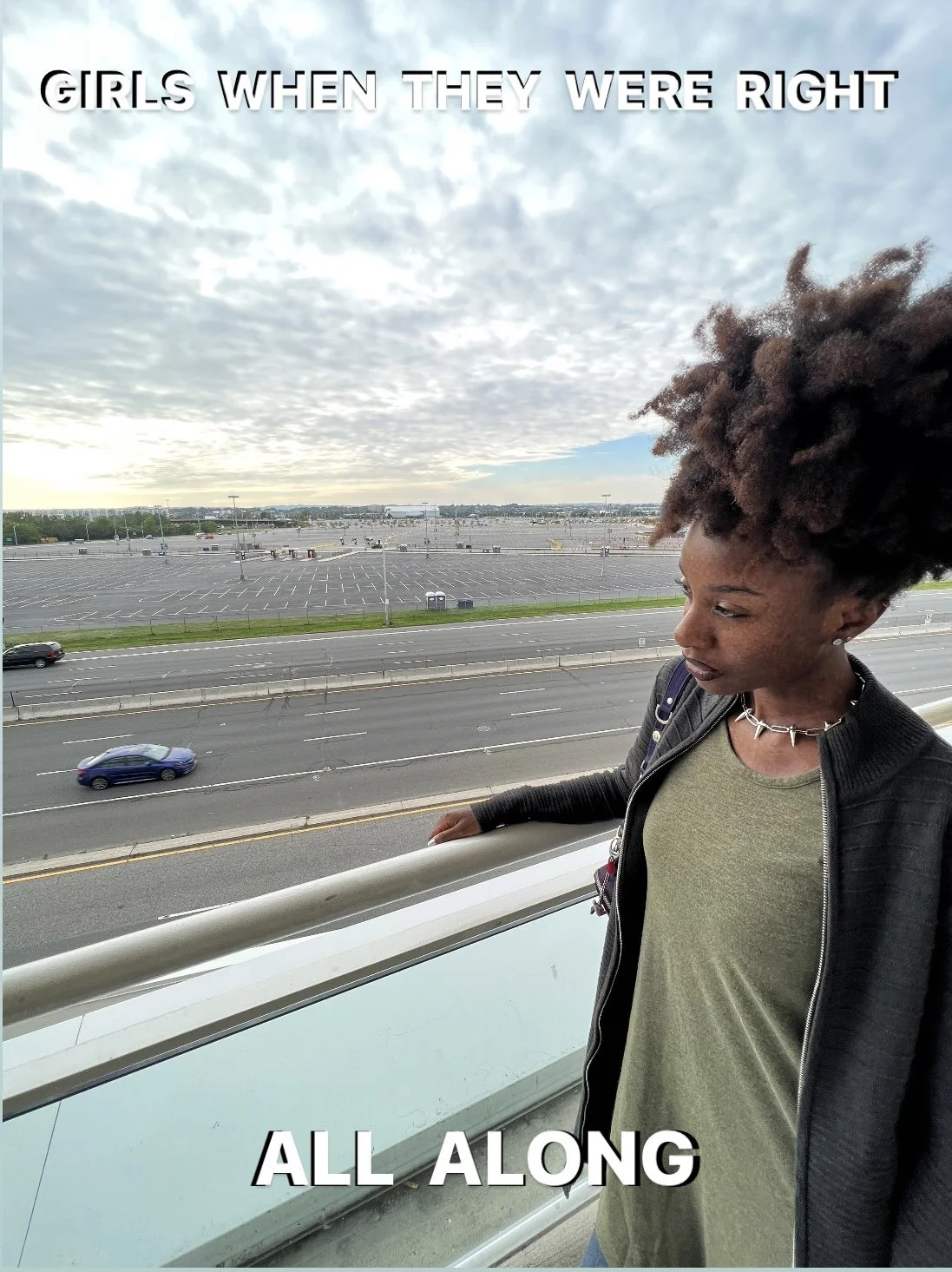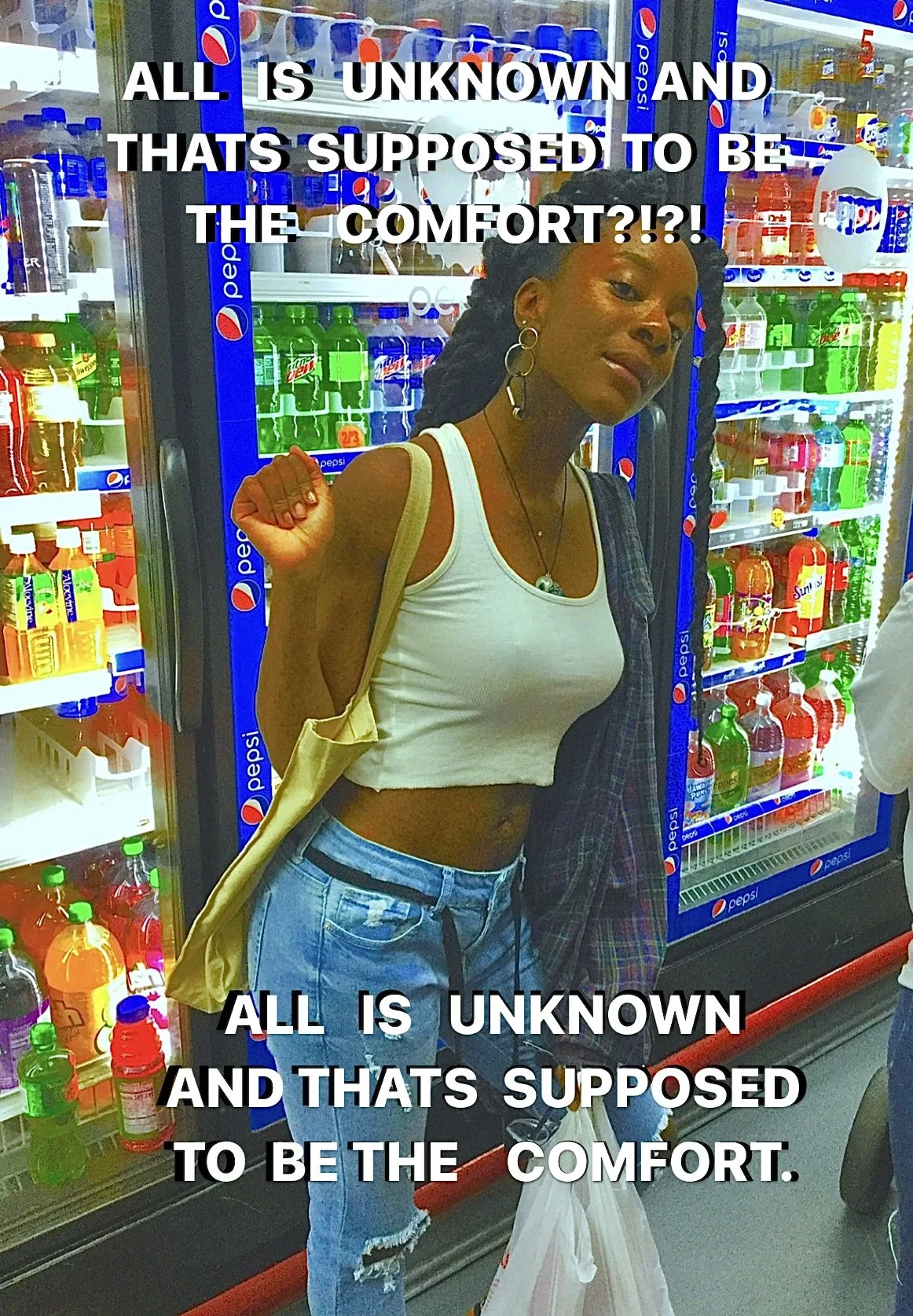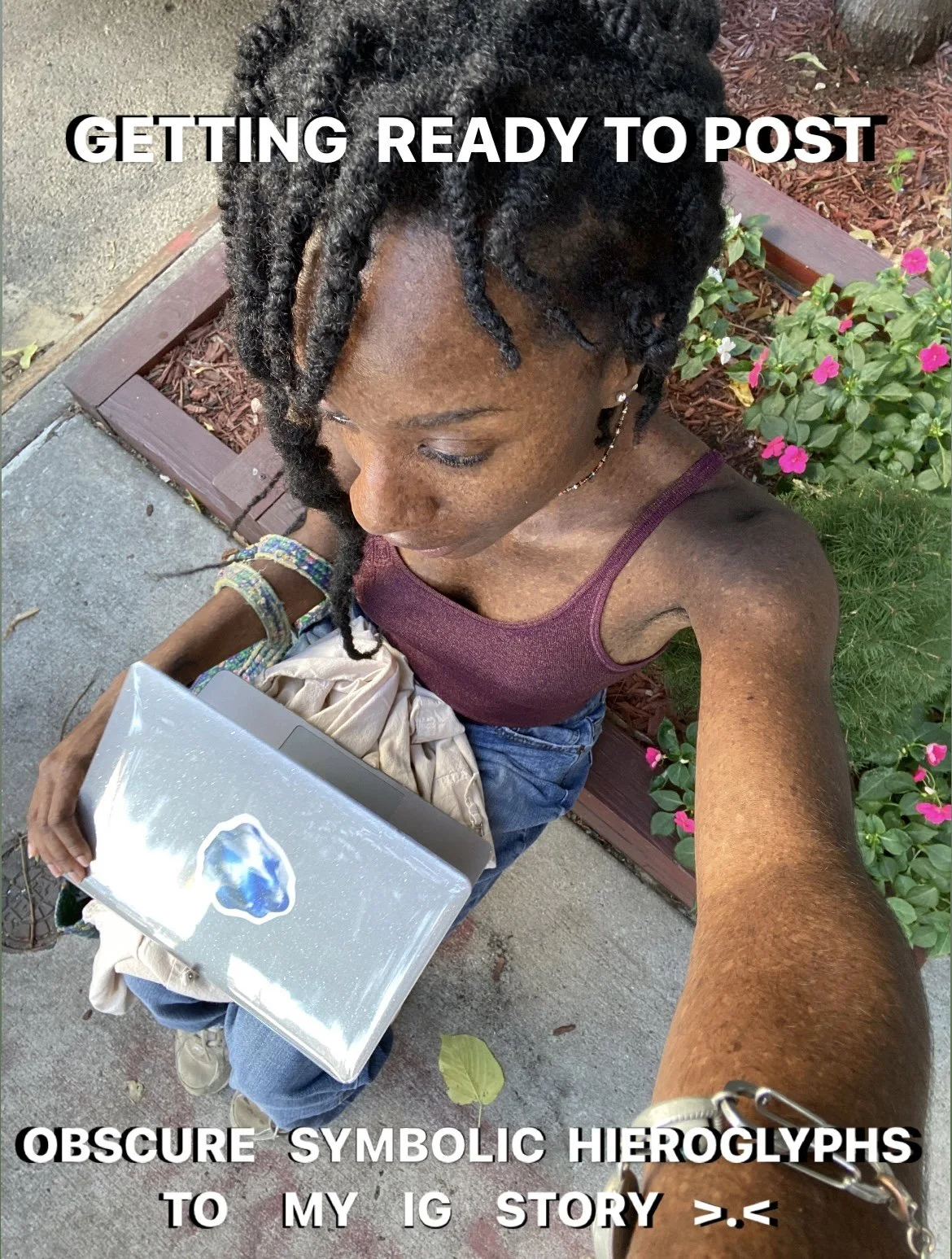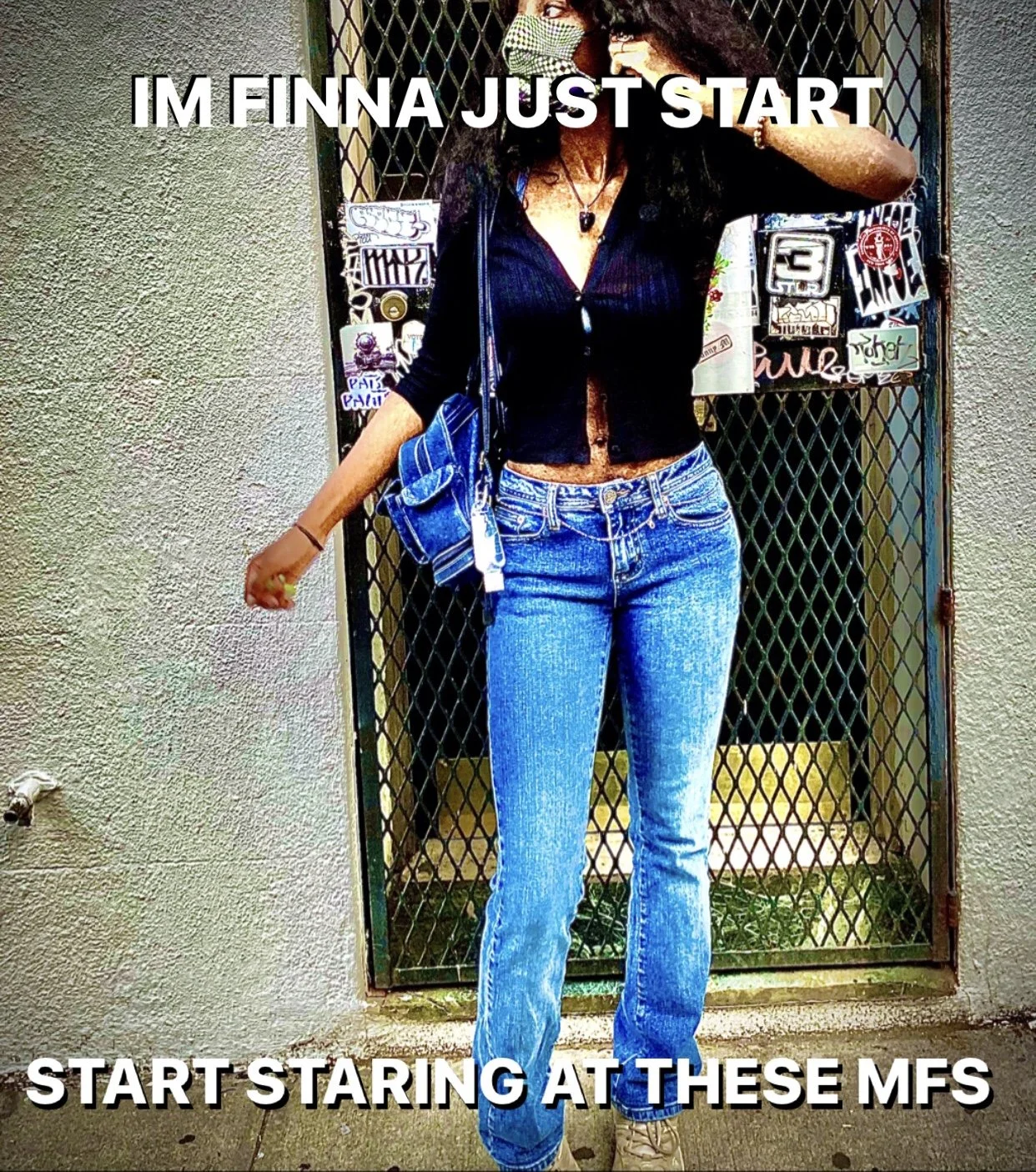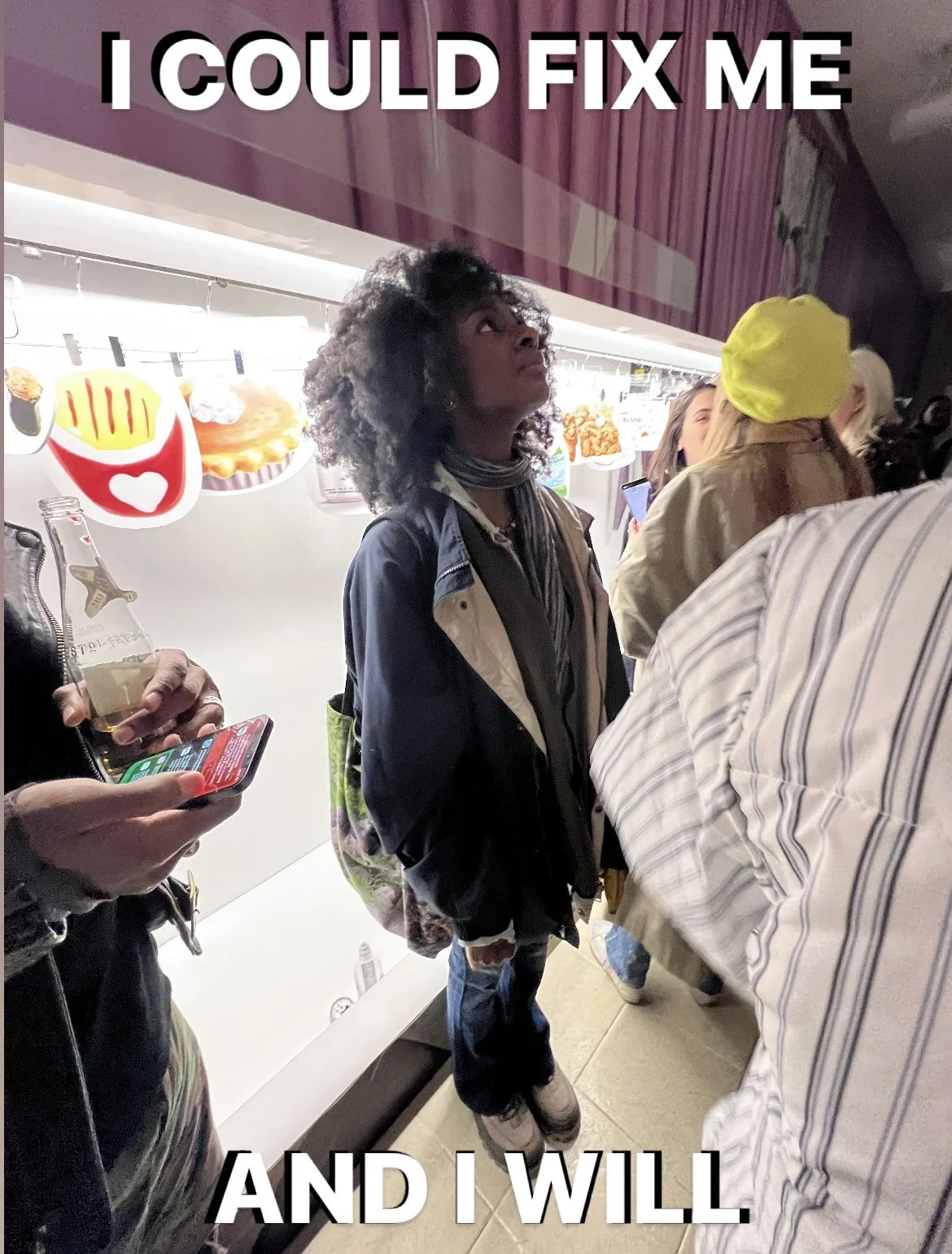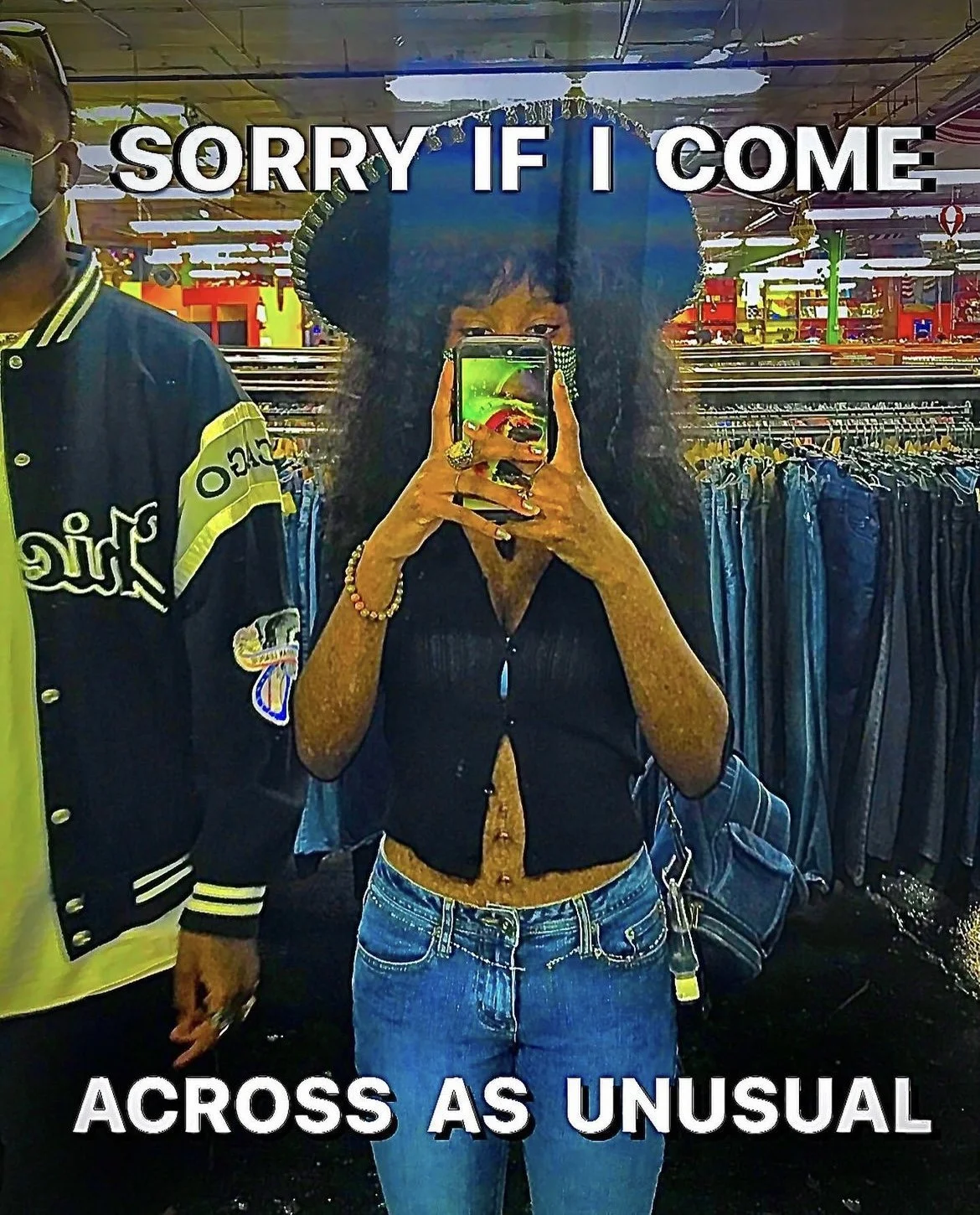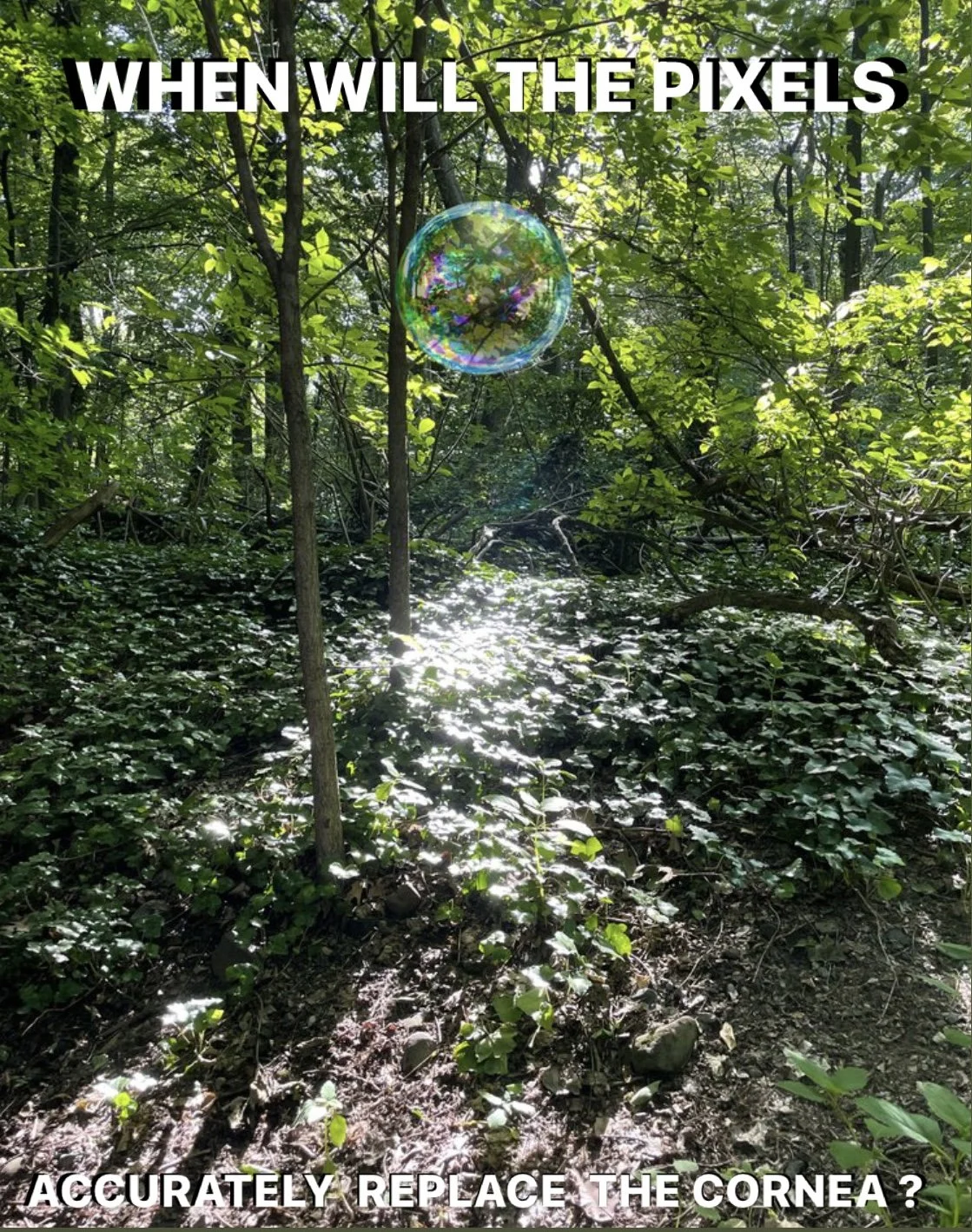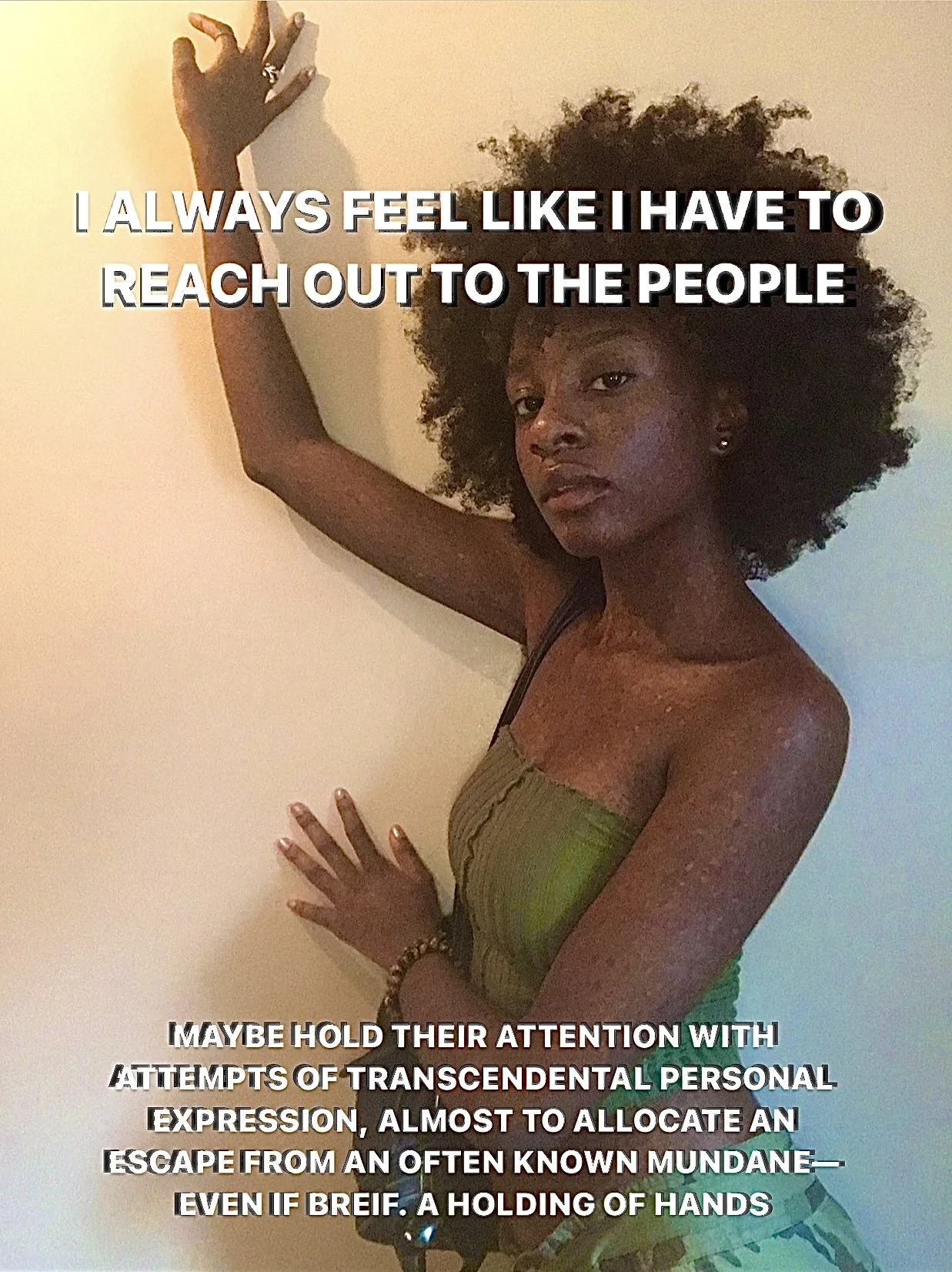What is Self Portraiture?
What is Self Portraiture?
Self-portraiture can be a visual documentation of who you are, how you see yourself, and how you want others to see you through your own artistic lens. It is both a capturing of introspection and self-reflection where you aid in the roles of the subject and creator. It is like playing as God herself on the Sims. Self-portraiture has evolved over hundreds of years! It used to be just an actualization of the physicality of self and most recently has involved more conceptual standpoints. In the seventh century, commonly known as Rembrandt’s era, self-portraits evolved from depicting the likeness of one self and began to depict the unearthing of the self. If you decide to partake in self-portraiture activities be sure to mentally prepare to explore your identity, emotions and experiences as a conscious individual living in a 3-dimensional plane <3
What is the Digital Age?
What is the Digital Age?
The digital age refers to the period characterized by the widespread adoption and integration of digital technologies into various aspects of daily life, culture, and society. Literally, like what are you even reading this on? This age encompasses a range of technological advancements, including the internet, computers, mobile devices, digital media, and artificial intelligence. The digital age has brought about a new level of transparency, connectivity, and access to information, shaping how we interact with the world and each other. This can all sound dandy but this evolution can get you caught up. The digital age presents challenges such as information overload, privacy concerns, digital divides, and the commodification of art and culture. In the digital age, we have access to vast amounts of information through the internet, social media, news platforms, and digital content. For example, after reading that sentence I have now downloaded your social security number into my memory. Just kidding. But what if I wasn’t ಠ_ಠ?
While this abundance of information can be beneficial, it also leads to information overload, where individuals may struggle to filter, prioritize, and digest relevant and accurate information amidst a sea of content. Addressing these challenges requires a multi-faceted approach involving technology, policy, education, and societal awareness. It almost asks of you to transcend this physical space and seek enlightenment for eternity. But seriously some steps to take to prevent this are promoting digital literacy and critical thinking skills, enhancing data privacy regulations and cybersecurity measures, bridging digital divides through infrastructure investments and inclusive digital policies, along with fostering ethical practices in digital content creation, distribution, and consumption. Balancing innovation and accessibility with privacy protection, equity, and cultural preservation remains an ongoing goal in navigating the complexities of the digital age. I hope this was of some use to you.
What are Memes?
What are Memes?
In the early days of the internet, memes were primarily spread through email chains, forums, and early social media platforms like Usenet and early internet forums. These memes often took the form of simple text-based jokes, anecdotes, or images with humorous captions. One of the earliest forms of visual memes to gain popularity online were image macros, which are images overlaid with humorous text. LOLcats, a subgenre of image macros featuring photos of cats with funny captions, became particularly popular during this time. The anonymous imageboard 4chan played a significant role in the proliferation of internet memes during the mid-2000s.
Memes such as "Rickrolling" [tricking someone into clicking a link to the music video for Rick Astley's "Never Gonna Give You Up"] and "Advice Animals" [images featuring animals with humorous captions] originated on 4chan and quickly spread to other platforms. The rise of video-sharing platforms like YouTube led to the emergence of viral videos as a prominent form of internet meme. Videos such as "Charlie Bit My Finger" and "Chocolate Rain" became iconic examples of internet culture during this time.
The proliferation of social media platforms like Facebook, Twitter, Instagram, and TikTok has transformed the way memes are created, shared, and consumed. Memes now encompass a wide range of formats, including image macros, videos, GIFs, and hashtags. Memes often spread rapidly through social media, with users remixing and adapting existing content to create new iterations.
Terminology : Memes :
Terminology : Memes :
The term "meme" itself was coined by British evolutionary biologist Richard Dawkins in his 1976 book "The Selfish Gene." Dawkins used the term to describe cultural ideas, behaviors, or symbols that are transmitted from one person to another through imitation and replication, much like genes are passed down through generations.
Can Memes serve as modern day self portraiture?
Can Memes serve as modern day self portraiture?
My Answer is yes. As an avid viewer of memes and an artist who sees nature reclaiming the earth iconography as strictly familial + energizing like a hug, memes can be a reflection of the creators’ communication with the self. What I'm trying to explore is the significance of memes being shared rapidly if relatable and what that says as a consumer taking part in modern portraiture. Memes are not all about relating to a silly picture and profound text. Dare I say there’s just something more to it? There is language and editing that goes into the consumption of memes but its significance is also prevalent in how memes spread/grow/transform + evolve. Memes can be both deeply personal and vague but their purpose culturally is to be copied [sometimes stolen] and spread far and wide. You can deeply relate to a meme and enjoy it, but going a step further to share it is an act of merging with it. Yes, it becomes part of your digital footprint but I feel it also shapes its identity for you and for the meme itself.
As a believer of unification and what we do to others, we do onto ourselves, my relationships with memes go beyond the obvious. I view the concept of memes as an urge to recognize and utilize one’s connection with everything. A practice common within nature and its inhabitants and I can’t help but see it spring up within art. “Life imitates art “ is a common idea suggesting that our inner world, comparable to an artist’s imagination, influences and manifests in our outer experiences. Regarding interconnectedness, art has a unique ability to transcend boundaries and connect people across cultures, languages, and beliefs. I believe that memes can share this view. Some memes are not cute, racist, transphobic, misogynistic, and extremely fucked up, but those memes reflect lower vibrational energies that not everyone subscribes to or even pays attention to. Out of sight out of mind type vibes. Those types of memes tend to be ego-driven and made to be controversial attention-grabbing and to provoke reactions because the creator and sharer have no swag :-(
In this instance doesn't the creation and sharing of memes not only reflect an individual's goals, ambitions, and mental state but also offer insights into the collective mindset of a group? It’s giving hive mind.
Meme Culture and the significance of self introspection transcending the Ego.
Meme Culture and the significance of self introspection transcending the Ego.
The Care Bears taught me that “sharing is caring”. I feel if you share a meme yes you care about it but it also echos a need to self-actualize. The process of sharing a meme is also taking part in self-actualization. Paying attention to and engaging with a meme deems understanding and aiding the meme in longevity, an acknowledgment of truth. Self-actualization refers to the realization of one’s abilities, potential, and awareness. In psychology, it is the process of striving to become the best version of yourself. Things online tend to move quickly, is it possible that engaging in meme culture activities is the quickest way to take part in self introspection and autonomy for the betterment of your own personal gain? Let’s explore how the ego can play a large role in meme culture by reflecting broader social and psychological dynamics that may not be at play at first glance:
Individuals may create or share memes to gain likes, shares, and positive comments, which can boost their self-esteem and validate their sense of humor or creativity. Some individuals may engage in meme creation as a way to compete with others, trying to outdo each other in terms of wit, humor, or relevance. This competitive mindset can stem from ego-driven motives to prove superiority or gain recognition.[ In what realm of existence does clout chasing not touch!?] Because the popularity of memes can be measured through likes, shares, and views, some individuals prioritize creating or sharing memes based on their potential to generate high engagement rather than genuine creativity or humor. Is this a bad thing? IDK. But it’s interesting to acknowledge.
In philosopher, Timothy Morton’s book “Humankind” Morton suggests that the ego has a sensory screen that can only project its ideas, wishes, and desires onto its sensory screen and as a result, the “transcendental ego” is trapped within the limits of its own experience [Morton, Timothy. Humankind: Solidarity with Nonhuman People. London: Verso, 2019] The ego exists within this matrix of social construction. Many post-modernists mention ‘the other’ which are things in themselves that are outside of or beyond the ego which can break into the sensory screen of projection which is called ‘introjection’:the unconscious adoption of the ideas or attitudes of others. Morton refers to this whole parade of ideas as correlationism. Many philosophers agree that the realm of the other cannot be harshly defined as Kant has accepted the existence of things of themselves but Morton explains how the ego always translates the ‘other’ under its terms. Mortons suggest that our worlds are not complete on their own and that the worlds of others are penetrable to be swayed and as a result, our fragile worlds are constantly overlapping and bumping into one another. We are not strictly sealed within our own transcendental limits and all creatures have this gap between their interiority and their inner essence and the way they appear to others. Kant believed this gap to only be present within humans while Morton suggests this gap is present within all beings and creatures and to go beyond correlationism is to accept the gap between the subject and everything in the universe.
Interconnectedness comes up again but it can’t be so without self-introspection. Self-introspection involves reflecting on one's thoughts, emotions, and experiences. Through this process, individuals develop a deeper understanding of themselves, including their vulnerabilities, motivations, and beliefs. This heightened self-awareness lays the foundation for empathy towards others. This empathetic connection forms the basis of interconnectedness, bridging the gap between individual introspection and shared understanding. Everything in the universe is interconnected and interdependent at a fundamental level. Self-introspection, especially in spiritual contexts such as meditation or contemplative practices, often leads to insights about this interconnected nature. As individuals delve deeper into self-inquiry, they may realize that their sense of self is intricately linked to the larger web of existence, blurring the boundaries between individual identity and universal consciousness. Self-introspection plays a vital role in this process by allowing individuals to explore their inner landscapes, beliefs, and perceptions. Through introspective practices, individuals may uncover layers of conditioned thinking, egoic patterns, and attachments that create a sense of separation. Take part in personal growth immediately by taking a step back from the meme and seeing yourself in others.
Relating it all back to nature because that's what I do ^__^
Relating it all back to nature because that's what I do ^__^
I mentioned earlier that life imitates art but join me in understanding life as nature. There was a meme I saw not too long ago that inspired this ‘information OVERLOAD” if you will. It read” the mycelial urge to recognize and utilize my connection with everything, and the picture was a group of fungi growing from a tree. I have writings about the consciousness of mushrooms and how nature is alive and imbued with wisdom but I will try to focus on information that matters in this exploration.
1st off, what is mycelium? Think of it as the underground network of mushrooms, resembling hidden threads beneath the forest floor. They act as the "roots" for mushrooms, akin to nature's telephone wires facilitating communication. Within this network, plants and trees engage in a symbiotic relationship with fungi. In the context of the mycelium network, memes serve as digital counterparts, analogous to the communication and cultural exchange facilitated by mycelium in nature. Just as mycelium transmits nutrients and information underground, memes transmit ideas and cultural references across the internet landscape. They play a significant role in shaping internet culture and communication, offering opportunities for individuals to express identity and engage in symbiotic interactions with others online.
The mycelium networks extend and adapt to their environment, and memes evolve and spread virally, reflecting the dynamic nature of digital communication and internet culture. In essence, memes embody a form of digital symbiosis, wherein individuals contribute to and benefit from the collective cultural ecosystem of the internet. They provide a platform for expression, connection, and the exchange of ideas, mirroring the interconnectedness and vitality observed in natural ecosystems facilitated by mycelium networks.
Imma stop because I lost the plot #fr but all in all memes evoke existentialism to be healing <3 Engage in healing today by sharing some memes.
